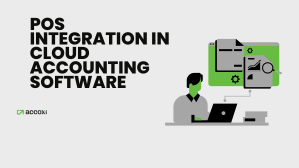

August 21, 2020

GST classification is the diverse broad categories into which goods and services are categorized, taking into consideration certain specific set of factors.
Goods and services are meant to fulfill the needs and wants of the people. Goods and Services Tax (GST) which is a tax imposed on different types of goods and services and GST classification is one wide stream coming under GST. GST is an important tax restructuring that has helped in large scale benefits for the Indian economy. GST has also heightened foreign investments in Indian economy. GST registration is a mandatory policy for businesses which supplies goods and services. If a company fails to register under GST, heavy penalties will be imposed on the defaulter on par with the GST act.
Classification of goods and services under GST mainly falls under 3 heads namely:
Specific tax rates are fixed for different GST categories. The GST items list of common goods and services are listed below:
| GST Items List | Tax Rates |
|
Edible oil, spices, sugar, tea and coffee, and other households except instant food packs, Coal, Indian Sweets, Lifesaving Drugs, and medications |
5% |
| Computers and their accessories, processed and instant food products | 12% |
| Toothpaste, hair oils, soaps, cleaners, industrial intermediaries, and capital goods | 18% |
| Cars, luxury bikes, ACs, refrigerators, electrical goods, cigarettes, aerated drinks, and other such luxury items | 28% |
GST list of goods and services are many different types. Let us have a look on the classification of services under GST and the GST list of goods considered for GST category consideration.
Free goods are natural things like air, water, sea, desert sand, sunlight etc. have unlimited supply and are free gifts of nature- people do not have to pay anything to procure these goods.
Economic goods are vegetables, minerals, grains, fruits, fishes and man-made or unlimited supply of nature and these goods can be procured by the public for specific prices.
Free Services cannot be bought in the market like services rendered by parents to their children.
Economic services can be bought from the market and are usually provided by doctors, lawyers, teachers, cobblers and other similar services providing professionals.
Goods that are consumed directly by the consumer are called Consumer Goods. Example: Fish, eggs, bread, butter, jam, biscuit, fan, shirts, books, pen, cooking gas etc.
Goods that are not directly consumed by the consumer but for further production are called Producer Goods. Example: seeds, fertilizers, machines, tools, raw materials etc.
Services that are directly consumed for satisfying wants of the consumer are called Consumer Services. Producer Services are services used by producers to produce other goods and services. When a consumer directly gets his shirt stitched from a tailor is a consumer service, whereas the tailor stitching shirt for a textile shop is producer service.
Consumer goods and producer goods which are consumable only one single time are called Single Use Goods like bread, milk, fruits, vegetables, seeds, fertilizers, raw materials etc.
Durable use goods are usable for a considerable time period for continuous usage like table, chair, clothes, shoes, hand, tub wells, tractors, pump sets etc.
Goods owned by private bodies are called private goods like cars, houses, motorbikes, phones and other similar private goods.
Goods collectively owned by the society, public or government are called Public goods. Roads, government schools, hospitals, bridges etc. are examples of public goods.
GST Categories are extensive and the exact record which depicts classification of goods and services under GST has been gazette published by the government of India.
| Item | Tax Rates |
|
Nil |
|
5% |
|
12% |
|
18% |
|
28% |
For more about GST




